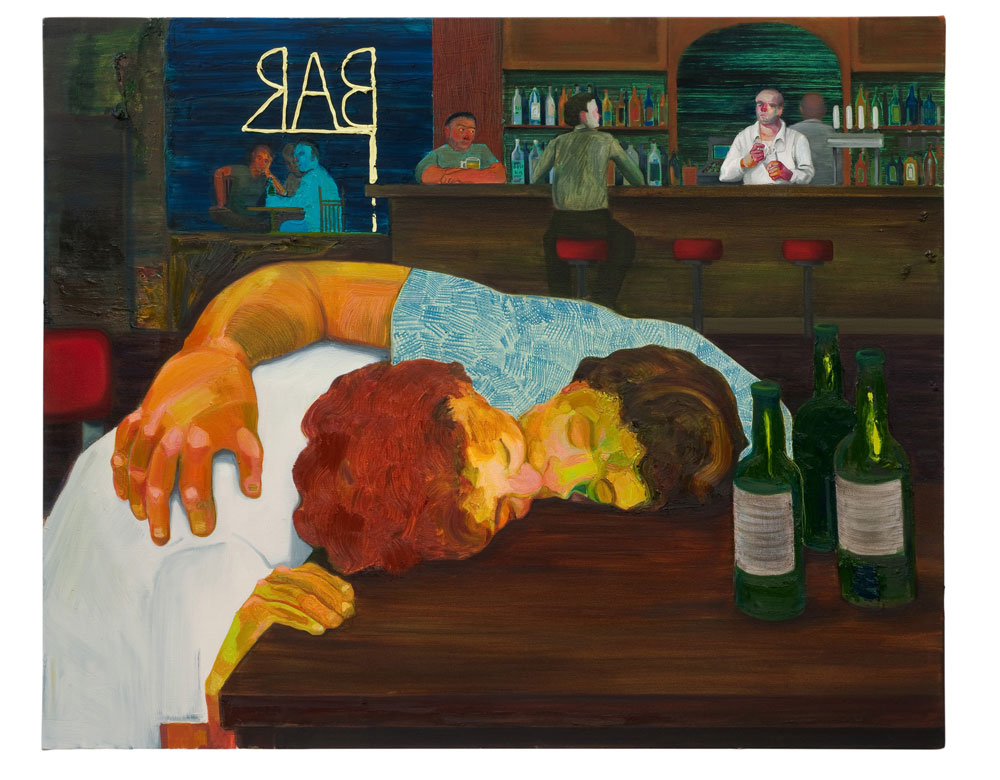
Nicole Eisenman: What Happened has been surprising and captivating visitors to the Museum of Contemporary Art since it arrived in early April. Judging from attendance at the show on a recent Wednesday afternoon, word’s gotten out about how strongly her art resonates.
Intended to prepare you for what you’ll see in the exhibition, a short video interview with the artist runs in a loop at the show’s entrance. Now in her mid-50’s and established as an important American artist, Eisenman is accustomed to being interviewed and appears relaxed and refreshingly forthcoming about who she is as an artist. She’s also quite open about what drives her perspectives on art and how identity informs her approach to it.
Born in France and emigrating to the United States with her parents when she was five, Eisenman may have inherited some of her creative impulse from her great grandmother, a Polish-born painter. Jewish, an immigrant and a person who fully embraces her lesbianism, Eisenman’s view of the world is influenced by each of these components of herself. She uses all of them and more to paint images that reflect back a world we immediately recognize. Presenting it in startling new ways is her superpower. Rebellious, spirited, controversial, audacious, irreverent, funny, brilliant, inspired. You’ll find aspects of each of those attributes in her paintings and sculptures depending on what she chooses to center her commentary. And, in What Happened, you get to see how she evolved beyond that brash young artist whose drawings and paintings lithely trumpeted lesbian solidarity, autonomy and eroticism in the 1990s. Completely disavowing narrow feminine ideals, the drawings are heavy on muscle, overflow with life and cavort in fun. As she matured, she would go on to expand her vision. Her canvases began reflecting broader issues like psychological isolation, class disparity, societal schism and the personal and cultural toll wreaked from our dependency on ever present, constantly beckoning technology.
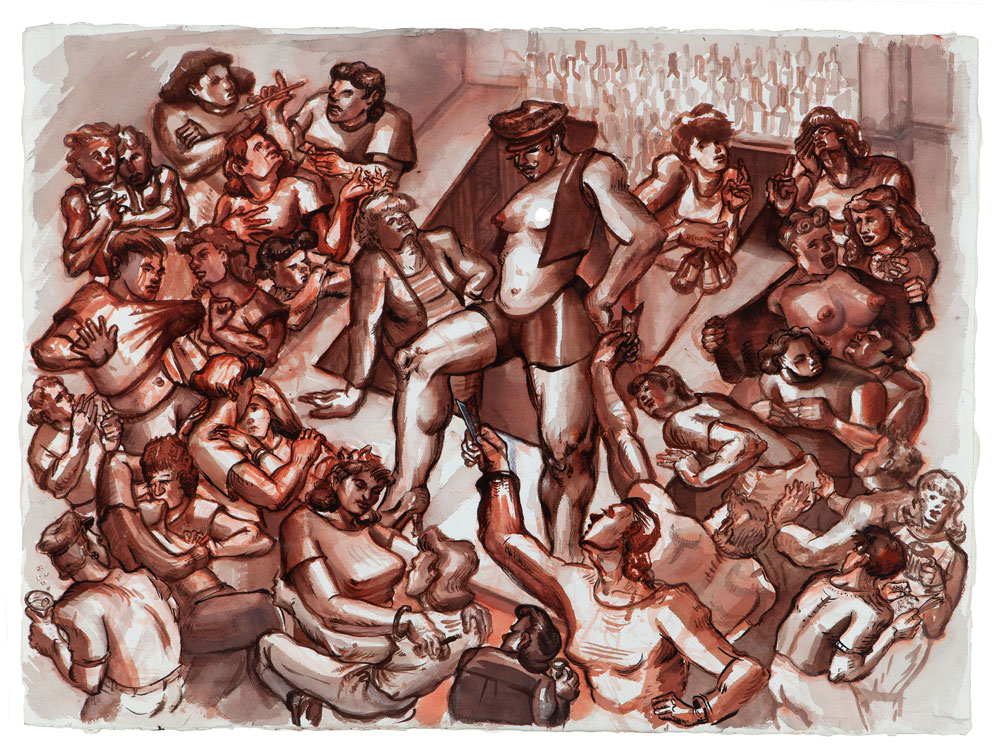
The shift occurred around the time the new millennium rolled in. Themes became more encompassing and her style of painting became more refined, more colorful and more nuanced. Ideas and principles important to her like the power of women as individuals and as a collective remained. But now it was presented in a classically representational format that told distinctively forthright stories. Fishing, one work from a three-panel triptych, shows a group of women in a frozen landscape ice fishing. With placid expressions, they watch as a man, hog-tied above the hole they’ve carved into the ice, is about to be lowered into the water as bait. Simultaneously serious and comical, you appreciate both the gravity of the artist’s statement and the clever way she’s rendered it as satire. That singularity of vision defines much, if not all, of Eisenman’s work. It would eventually catch the attention of the MacArthur Foundation who would name her a Fellow in 2015.

Like Coping, a work she completed in 2008, some of her most engrossing images show people in crowds. Although the world they exist in seems to be one in the throes of devastation, the people who inhabit Coping are oblivious to it presence and impact. Each of them seems detached from one another and their plight as they trudge through an undefined waist high watery muck. One woman is nude. A mummy walks away with his back turned to the viewer. A man in bowler hat and suspenders casually sucks on a cigarette. All under a yellow sky with forlorn brown clouds. Rather than coping with their fate, they seemed resigned to enduring a life they have little agency in changing. Eisenman has said faces are something she never tires of drawing. In her paintings, she allows her figures to say a great deal with minimal expression. The technique makes her subjects magnetic and mysterious; causing you to stare into their faces trying to penetrate their inner thoughts.
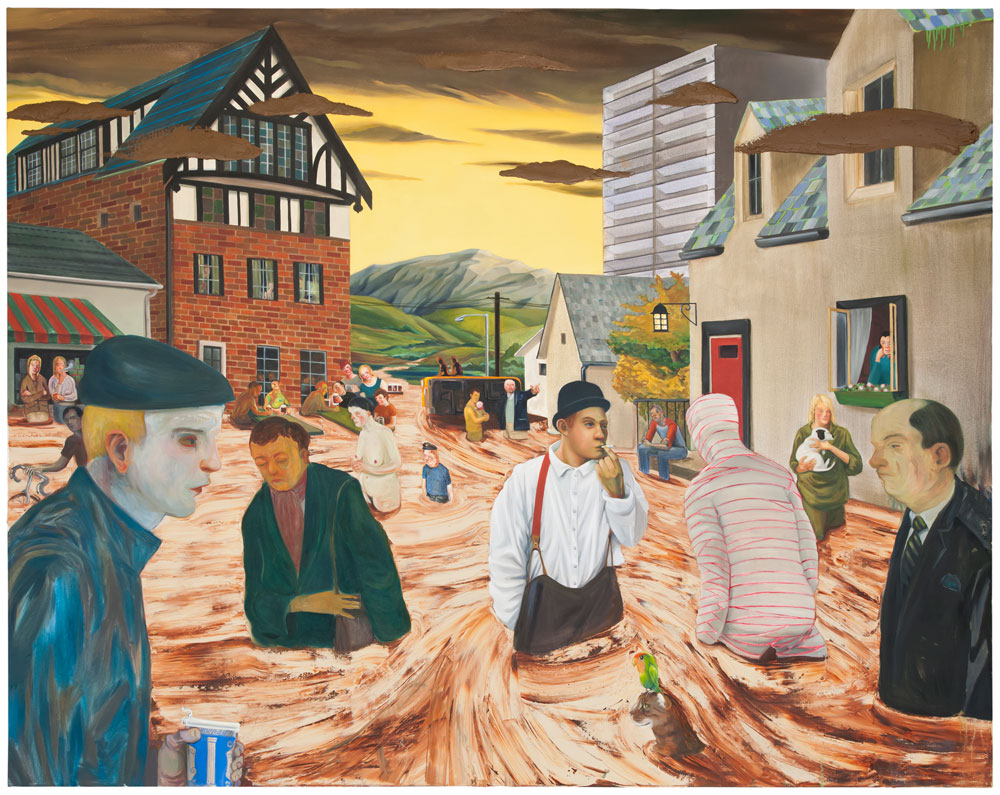
In The Abolitionists in the Park, a very different kind of crowd is gathered in a New York City park following a civil protest over the slaying of George Floyd. Rooted much more in a familiar reality, this gathering has plenty of people alone in a crowd. There are also couples and friends together in a place of quiet; reflecting on the act that pushed them to streets in defiance of injustice. The sense of community and like-minded purpose brims from the monumentally scaled painting. The crowd is youthful, cosmopolitan in its diversity and completely relaxed in the way it shares a common but congested space. Belief in, or a commitment to, some higher meaning hangs over the scene; filling the work with an abiding sense of calm and peace. At the center, a young couple sit together. The woman relaxes in reflection with a joint between her fingers. Rolling another, her partner glances in her directions. It’s a fascinating and engrossing scene, chock full of interest and honesty and revealing observation.
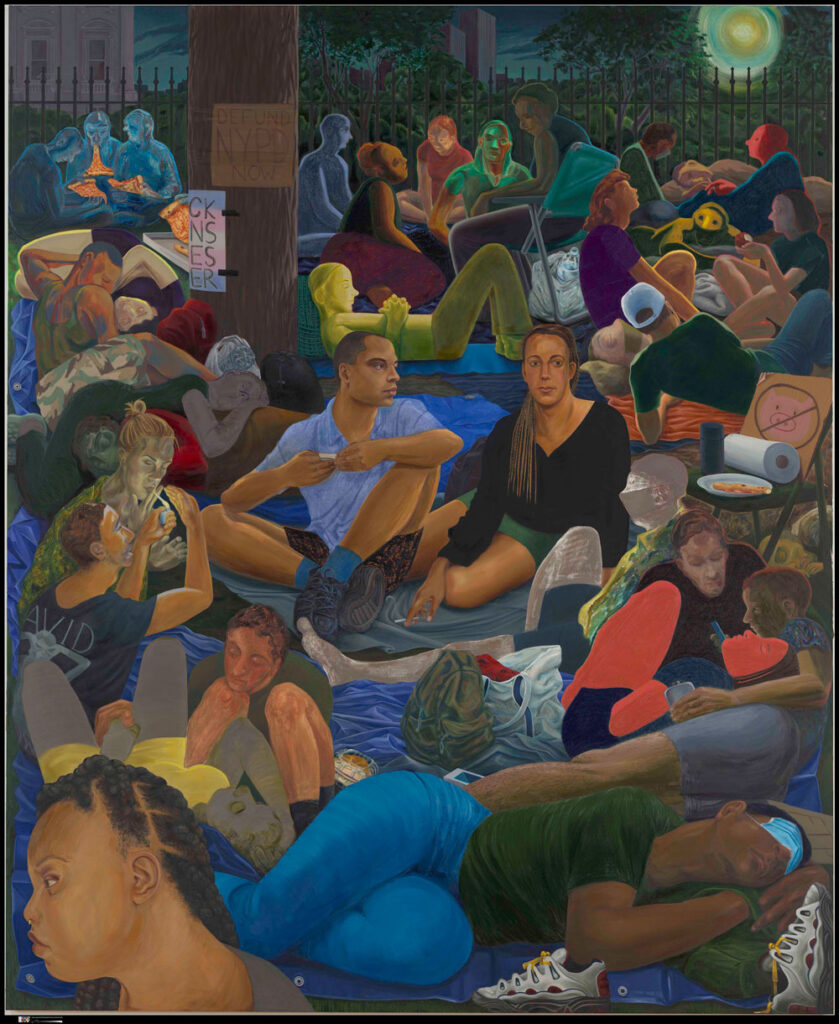
Paintings that reflect her views on the perilous lives of artists and technology zero in on the individual. In the first, she bravely confronts the personal doubts that plague artists. In the process she shows what it is to be a person whose career involves creation and public judgment. There you see relatable vulnerability; it’s seriousness softened by an air of fanciful whimsy.
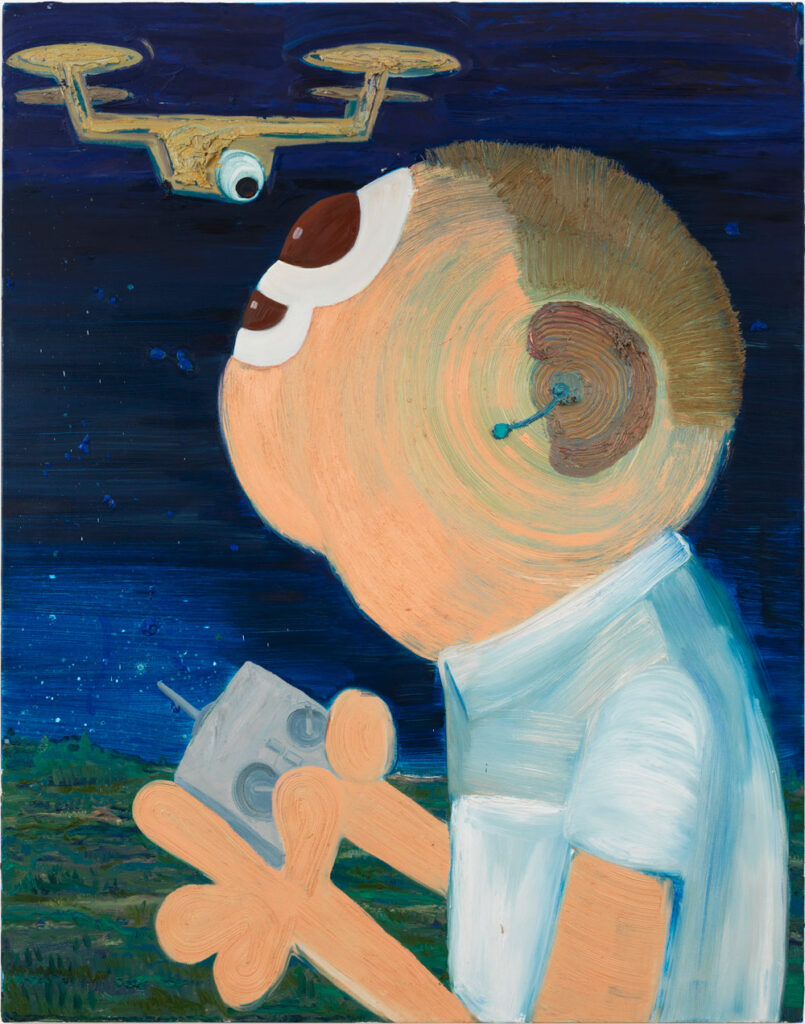
That same sense of lightness infects her paintings that peer into how we interact with the tools and toys of technology that devour so much of our time and attention. But no matter how fanciful the treatment, there still seems to be a numbing pall threading through the messages she’s sending. In Drone Painting #1, completed in 2018, a cartoonish character stares up at a drone he’s controlling with a hand held remote. The drone’s single eye peers down on him while his two oversized eyes, one overlapping the other vertically, returns an equally bold and curious gaze. Another comical character lounges in a couch watching television in Reality Show. It’s his look of droll detachment, one that reaches beyond simple boredom, that you immediately register. Both paintings seem to ask how did we get here and how can we escape. They’re questions that have haunted humankind from day one. Eisenman’s art offers us ways to see ourselves that can potentially lead us to better futures.
Nicole Eisenman: What Happened
Through September 22, 2024
Museum of Contemporary Art
220 East Chicago Avenue
Chicago, IL 60611